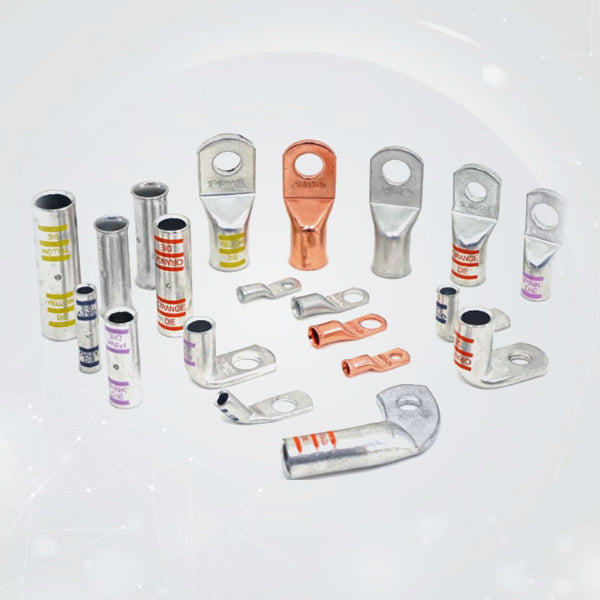
The Right Way To Install Marine Battery Lugs On Damp Or Wet Terminals
If you’ve spent any time working on boats, you know that electrical systems that operate on boats face harsh conditions from the marine environment which damages their components. The combination of saltwater with humidity and continuous vibrations leads to connection corrosion while weakening bonds and generating multiple performance problems.
The correct installation of marine battery lugs on wet or damp terminals represents more than following standard procedures because it protects your electrical system from failure during critical times. Your boat's electrical system requires the correct installation of marine battery lugs to ensure the safety and dependability in emergency situations.
Let's discuss the correct installation, mistakes to avoid, and the best practices that keep your connections solid in the worst conditions.
Why Marine Grade Battery Lugs Matter
Before we get into installation, it’s worth addressing why you should be using marine grade battery lugs in the first place. Unlike standard lugs, marine battery cable lugs are designed specifically for corrosive environments. They’re usually made from high-conductivity copper and coated, often with tin, to resist oxidation and the damaging effects of saltwater exposure.
The result? Longer-lasting connections, reduced voltage drop, and fewer maintenance headaches. But even the best lugs won’t save you if the installation is sloppy, especially on damp or wet terminals.
How To Install Marine Battery Lugs
1. Safety First
Before you touch a single cable, confirm that your battery is disconnected, negative terminal first. Wear eye protection and insulated gloves. Keep in mind: marine battery systems (even at low voltage) may produce dangerous spark if you are careless when working with them.
2. Assess The Terminal Condition
If your battery terminal is damp or wet, you need to determine why. Is it just condensation from temperature changes, or do you have electrolyte leakage or saltwater ingress?
- Condensation: Wipe clean and proceed with caution.
- Electrolyte leak: Address the root cause before reconnecting. Acid residue will corrode your lug in no time.
- Saltwater exposure: Rinse with fresh water, dry thoroughly, and consider applying a corrosion inhibitor before installation.
3. Prepare The Cable And Lug
Cut your cable cleanly with a proper cable cutter, no crushing or frayed ends. Strip only as much insulation as the lug barrel will cover. For marine grade battery cable lugs, ensure the stripped wire fits snugly inside the barrel for maximum conductivity and mechanical strength.
If you’re using marine grade battery lugs from Selterm, you’re already ahead, these lugs are tinned for corrosion resistance and precision-engineered for secure crimping.
4. Dry The Terminal Surface
Humidity can cause long-term corrosion even if your lug is marine-grade. Take a clean, dry rag and wipe off all moisture. If you are in very humid conditions you might want to blast the contact areas of the lug with compressed air as a precaution against moisture.
5. Apply An Anti-Corrosion Compound
For marine environments, applying a thin layer of dielectric grease or an anti-oxidation compound to the contact surfaces can make a big difference. It creates a barrier against moisture and salt without compromising conductivity.
6. Crimp With The Right Tool
This is where many installers go wrong. Using pliers or an undersized crimper can create a weak, uneven crimp that fails under vibration. Use a proper crimping tool rated for your lug in this case, your marine battery cable lugs to achieve a clean, secure, hex-style or indent crimp.
Proper crimping ensures that moisture won't wick into the connection, which is one potential cause of corrosion in marine wiring.
7. Seal The Connection
On a boat, sealing is just as important as crimping. Use adhesive-lined heat shrink tubing over the crimped joint, extending slightly over the lug barrel and cable insulation. When heated, the adhesive flows to create a watertight seal that protects against both moisture and salt intrusion.
8. Tighten Correctly
If you overtighten, you may damage the lug or battery post. If you under-tighten, there can be arcing and heat build-up. Use a torque wrench when possible and follow the manufacturer's specification for your battery terminal.
9. Final Protective Measures
Once tightened, consider applying an extra layer of dielectric grease over the connection. For boats in salt-heavy spray zones, some installers also add a protective terminal boot or cap for added protection.
Common Mistakes To Avoid
Even experienced marine electricians can slip up when working on damp or wet terminals.
Avoid these pitfalls:
- Skipping the drying step: Moisture trapped under a lug will speed up corrosion.
- Using non-marine lugs: Standard lugs simply won’t hold up in a marine environment.
- Improper crimping: Weak crimps lead to high resistance and heat buildup.
- No sealing: Without heat shrink or another seal, moisture will find its way in.
- Overlooking terminal condition: Installing on a corroded post is a temporary fix at best.
Why This Matters
Marine electrical failures aren’t just inconvenient; they can be dangerous. A bad battery connection can leave you without power for navigation, communication, or bilge pumps.
In rough conditions, that’s not a situation you want to face.
By installing your marine grade battery lugs the right way, even on damp or wet terminals, you extend the life of your electrical system and avoid the hassle (and potential danger) of mid-season repairs.
Final Thoughts
In the marine environment, electrical reliability is a must-have, not nice-to-have. Properly installing marine battery lugs is among the simplest ways to keep your systems working properly, even under less than ideal conditions.
If you are ready to replace or upgrade your lugs with components made for the marine environment, check out Selterm’s Marine Battery Cable Lugs for reliable, corrosion-resistant solutions you can count on whether your terminals are in dry, damp, or in-between conditions.

